#scottish-gaelic
Explore tagged Tumblr posts
Text
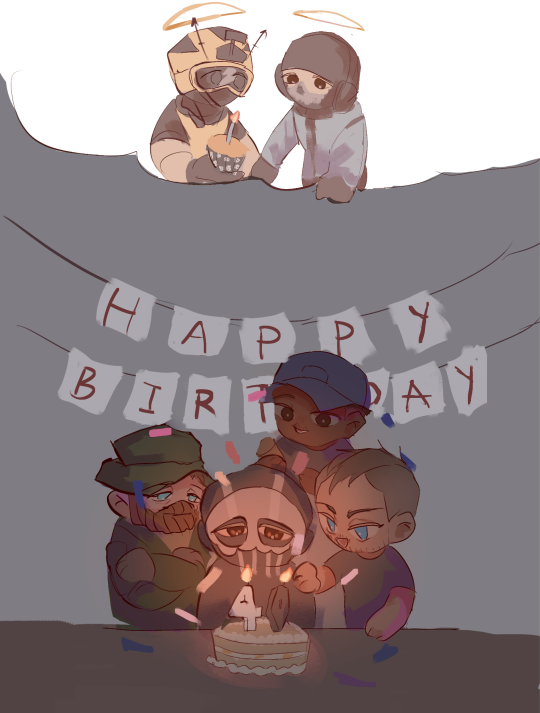
happy birthday simon ghost riley
all the joy and love for you, simon
#call of duty#gary roach sanderson#ghost cod#simon ghost riley#cod roach#john soap mactavish#cod#cod soap#cod gaz#kyle gaz garrick#john price#cod john price#my art#its mango cake for 22ghost#tf141 uses their knowledge of language here#singing all variants of the happy birthday song for simon#you think its the end?#no. its time for the scottish gaelic version#they butcher the pronounciation (except soap) but its alright#their love for simon is being transmitted#happy birthday ghost
3K notes
·
View notes
Text
'Wool waulking is a traditional Scottish process of finishing and strengthening newly woven woolen fabrics. It is a significant social and cultural activity, often carried out by women in the Highlands of Scotland. The Gaelic songs that are sung during waulking have a distinctive rhythmic pattern that aids in synchronising the work.'
(Video and text via Inverness Outlanders)
#so obsessed with waulking songs so i had to share this#folk#folk culture#scotland#scottish folklore#celtic folk#scottish gaelic
15K notes
·
View notes
Text

Drawing caillich for something
185 notes
·
View notes
Text

Gaelic in Scotland
Once the dominant language of Scotland, Gaelic is now spoken by just a small percentage of the population. But its influence lingers in place names, culture, and folklore. From ancient myths to modern-day revival efforts, here’s a look at the language’s journey—and where you can still hear it today.
#scotland#scottish#travel#scenery#landscape#nature#travel inspiration#scottish highlands#landscape photography#scottish beach#gaelic
225 notes
·
View notes
Text
The words of Love
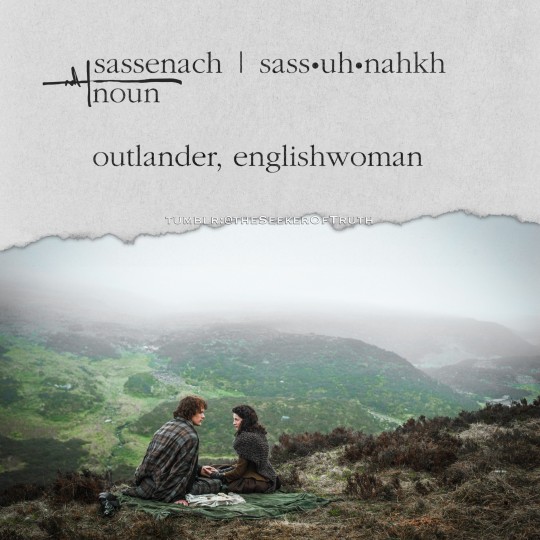
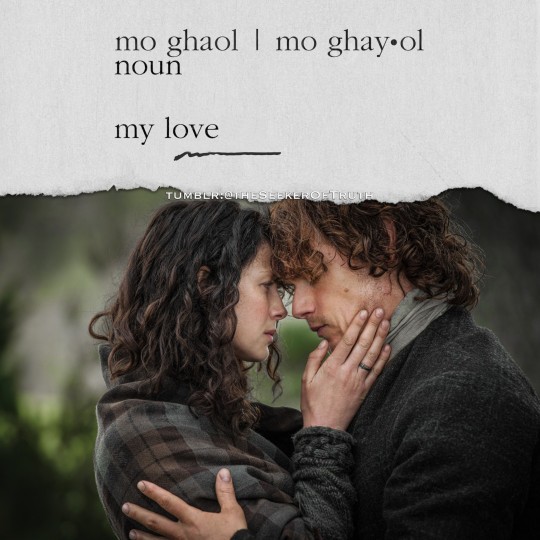
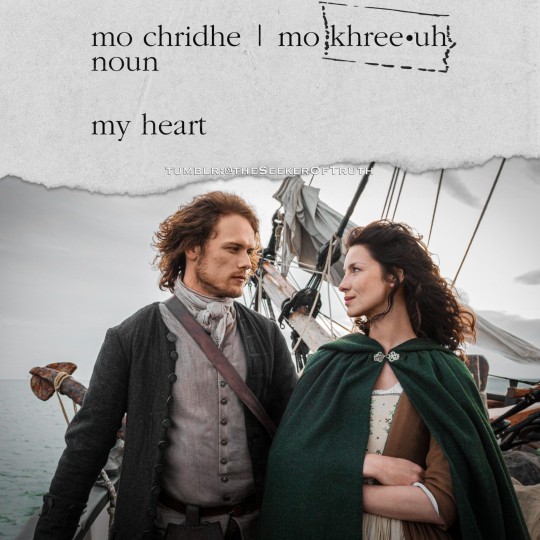
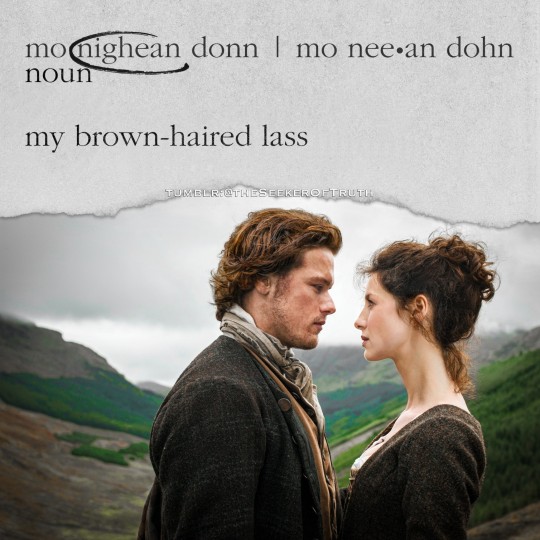

#outlander fanfic#outlander starz#outlander#Starz#outlander fandom#outlander fanart#jamie fraser#james fraser#james alexander malcolm mackenzie fraser#claire beauchamp#claire randall#claire fraser#sam heughan#samcait#caitriona balfe#scotland#scottish#gaelic#diana gabaldon#Tv#period drama#Drama#highlands#highlander#England#UK#great britain#Fraser#Je suis prest#clan mackenzie
215 notes
·
View notes
Text
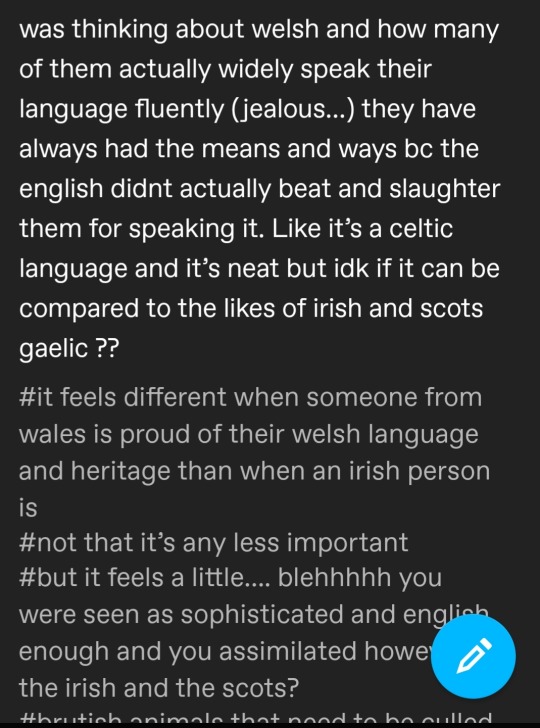
I'd like to preface this with that this is a screenshot of a post I saw a few days ago in the #welsh tag and that the OP has since deleted this post, but the sentiment is something I'd like to address since I see a lot of parallels with this kind of thinking in other contexts, such as in LGBTQIA+ rights conversations.
So, the most obvious elephant in the room is the idea that Welsh is super widely spoken in Wales now and that it isn't in as much danger as other Celtic languages. This idea is wishful thinking at best and erases the very real danger that Welsh is in and that it could be lost just as easily as Irish or Scottish Gaelic. Cornish (which is related to Welsh) actually did die out and has had to be revived. To make a metaphor out of this, we classify languages on a scale of non-threatened to endangered in a similar way to how we classify species.
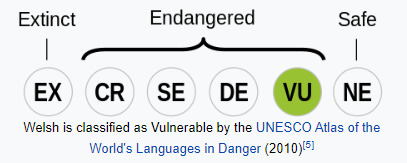
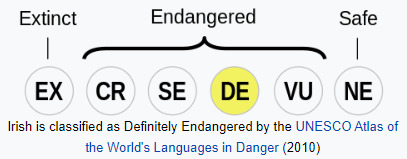
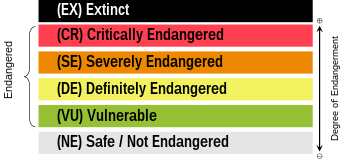
Here are the statuses of Welsh and Irish as of 2010 (above) and the statuses of Lions and Tigers (below).

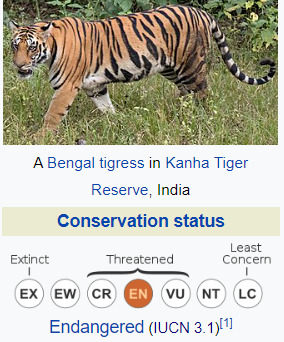
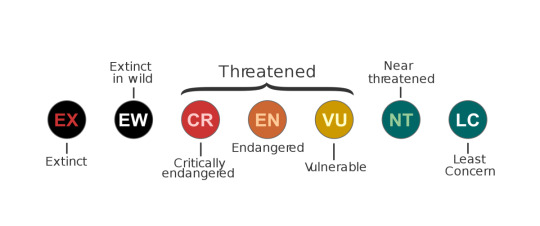
On paper tigers are more 'in danger' than lions. But that does not mean that lions are suddenly not in danger at all. The little bracket above CR, EN and VU labels all of these classifications as threatened. It isn't (and definitely shouldn't) be a competition of 'who is most in danger' because you do not want the thing you care about (whether it be a species or a language) to be in danger.

To come back to the original screenshot "they* [Welsh speakers] have always had the means and the ways because the English didn't beat or slaughter them for speaking it"- on the most basic of levels, this is just incorrect. The Welsh Not was a wooden token hung around schoolchildren's necks if they spoke Welsh in school. If someone else spoke Welsh the Not would be hung around their neck. At the end of the school day, whoever was wearing the Not would be beaten and caned by their teachers. I needn't go into much detail but there have been concerted efforts to beat Welsh out of schoolchildren. With the lions vs tigers metaphor, making the claim Welsh speakers have never been beaten for speaking Welsh because they always had the means and ways, while Irish speakers were beaten and never had the means or ways is like claiming poachers have never shot lions, only tigers. Bottom line is, lions and tigers are both victim to poaching and both species have suffered as a result. Similarly, Welsh and Irish have both suffered language loss and both need conservation efforts in order to survive.
(*sidenote- the consistent use of 'them' and 'they' in the original post is definitely indicative of a 'us vs them' sentiment which is a deeply unhelpful attitude to have when it comes to endangered languages and the Celtic languages in particular)
I see parallels with LGBTQIA+ rights in this situation. When equal marriage came in for gay and lesbian couples in the UK in 2014, many allies began to act like gay rights had now been achieved and that gay issues had been done, they're solved. Except, they really weren't (and aren't). Progress has been made in Wales and undeniably Welsh is doing the best out of the living Celtic languages. But that doesn't mean Welsh has been saved or that full equality for Welsh speakers has been achieved. It very much hasn't. The sentiment of the post in the screenshot is not conducive to helping Irish or Scottish Gaelic. Putting down Welsh speakers and erasing Welsh-language history will not save Irish or Scottish Gaelic. Pretending Welsh has had it easy in some kind of lap of luxury is a deeply harmful and bogus claim.
I'll address the tags under the cut as this post is getting long.
To address the tags, personal feelings ≠ an accurate reading of a situation. Nor is it praxis, for that matter. Why is pride in Welsh different/less good than pride in Irish? Is it the assumed proximity to England? If so, that's a terrible claim to make. Not only that, but Scotland is also next to England- does that make pride in Scottish Gaelic the same as pride in Welsh according to this metric? It's a ludicrous thing to say and deeply insensitive to the needs of Scottish Gaelic and Welsh speakers, who cannot help any current or former proximity to England.
Additionally, proximity to England ≠ worse. I know it's a popular internet joke to hate on England because of English attempts to eradicate the Celtic languages, but when the joke becomes praxis, it does not help. England ≠ a place devoid of Celtic languages either. Many English counties near the Welsh border actually have communities of Welsh speakers, such as Oswestry (Croesoswallt) in Shropshire. Cornwall is also home to many speakers of revived Cornish. It does a disservice to Celtic speakers in England to insinuate that proximity to England taints or corrupts them somehow. This is how ethnonationalism starts and we ain't about that.
And "#it feels a little.... blehhhhh you were seen as sophisticated and english enough and you assimilated however the Irish and the Scots? #brutish animals that need to be culled". So, this is arguably one of the worst things to say about a Celtic language- or any threatened language in general. First of all, the 'you were seen as' - 'you' is very telling. The switch from 'them', 'they' to 'you' indicates that this sentiment is aimed at Welsh speakers directly. This was likely a subconscious thing that OP wasn't thinking about when they wrote this. But it does indicate unhealthy feelings of jealousy and bitterness unfairly directed at Welsh speakers, who are also struggling. This righteous anger at the decline of Irish and Scottish Gaelic would be better directed at efforts to help promote those languages- some useful things to get involved with are LearnGaelic, similar to DysguCymraeg but for Scottish Gaelic or supporting channels such as Irish channel TG4 by watching their programmes.
The idea that Welsh speakers were or are 'sophisticated and english enough' is insulting and carries with it a lot of baggage of how any of these assumptions came about. Welsh speakers were definitely not seen as sophisticated. Where Welsh was 'tolerated', it was treated as a curiosity, a relic of a bygone age. Classic museification which all Celtic languages and cultures suffer from as well. Welsh was not tolerated in any legal sense since 1535- with English becoming the only valid administrative language and the language of Welsh courts after England annexed Wales into its Kingdom. Monolingual Welsh speakers suddenly had no access to any legal representation, unless they learned English. This is no voluntary assimilation- it is an act of survival for many speakers of minoritised languages to 'assimilate' into the dominant culture, or else risk losing access to legal security and other kinds of infrastructure. You need only ask any non-native English speaker living in an Anglophone country what that process is like. Welsh people did not see English incursion as an opportunity to become 'sophisticated and english enough', they had to assimilate in order to survive.
The "Irish and the Scots? #brutish animals that need to be culled" is also painfully misrepresenting a very complex social and political process that unfolded over the span of hundreds of years. The phrasing itself of 'brutish animals that need to be culled' speaks to righteous anger at the damage done to these languages and cultures, but it reinforces negative stereotypes about the Irish and Scots themselves. It also is more complicated than a simple English hatred of anything non-Anglo, since the English conception of particularly the Irish changed a lot over the centuries. It was (and still is) rarely consistent with itself. See: the enemy is both strong and weak. The very earliest Celticists were by and large, Anglos or French.
Ernest Renan (1823-1892) for example, was an early French Celticist who published La Poésie des races celtiques (Poetry of the Celtic Races- English translation) in which he says:
"... we must search for the explanation of the chief features of the Celtic character. It has all the failings, and all the good qualities, of the solitary man; at once proud and timid, strong in feeling and feeble in action, at home free and unreserved, to the outside world awkward and embarrassed. It distrusts the foreigner, because it sees in him a being more refined than itself, who abuses its simplicity. Indifferent to the admiration of others, it asks only one thing, that it should be left to itself. It is before all else a domestic race, fitted for family life and fireside joys. In no other race has the bond of blood been stronger, or has it created more duties, or attached man to his fellow with so much breadth and depth"
Yeah. This guy (unsurprisingly) was a white supremacist. Note that this sentiment is being applied to all people considered Celtic by Renan- Irish, Welsh, Breton, Scottish, Cornish, Manx etc. None unscathed by the celtophobia of the day. In this period, Celticity was romanticised (yet disparaged at the same time). It is less 'brutish animals' and more 'archaic, time-frozen peoples' in this period. Of course, 'brutish animals' attitudes towards Celticity did still exist, but it is disingenuous to act as if it was this attitude alone which drove English celtophobia. Like many things, it is always more complicated and never clear cut as it might seem.
I'll bring this to a close shortly, but returning to OP's suggestion that the Welsh assimilated and the Scots and Irish did not, is also incorrect in that some Scots did have to assimilate to survive as well. The Statutes of Iona (1609) required Scottish Gaelic speaking Highland chiefs to send their sons away to be educated in Scots and/or English in Protestant schools. Many did as the statutes required, which led to further language loss in the Highlands of Scottish Gaelic. These are acts of survival- and not ones always taken willingly.
This has been a long post but it's one which I felt I wanted to address. There's no need for infighting between speakers of Celtic languages over who has it worse. There isn't any answer to that question, nor is it a good use of time or energy. All in all, the Celtic languages have suffered greatly over the years and its only just now that some of them are turning a corner. If you care about these languages, put your energy into something good. Only through active work will these languages be saved for generations to come.
#long post#lukes originals#cymraeg#gaelige#gaidhlig#Irish#Welsh#Scottish Gaelic#politik#not dictionary related#Celticist#Celtic Studies#This took a lot of energy to write so if you found this post useful please consider reblogging
1K notes
·
View notes
Text
I don't like this for so many reasons. Anglophone (usually USAmerican) writers often take foreign words and misrepresent them in their books, misinforming a whole new wave of readers in the process. They regularly do this with Greek as well. These languages haven't resisted assimilation and suppression so they can be used as USAmerican accessories in 2023.
890 notes
·
View notes
Text
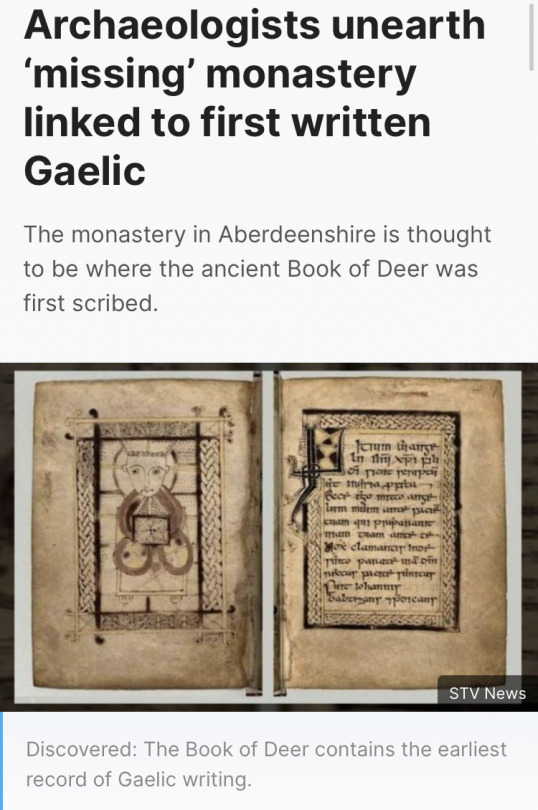
Very cool.
Article here
919 notes
·
View notes
Text
Irish people 🤝 Scottish people 🤝 Welsh people
having cool ass names
69 notes
·
View notes
Text

Gallowglass, Irish Mercenary Warrior IV
#art#illustration#design#digital art#drawing#character design#rpg#dnd#sword#drawdrawdraw#irish#gaelic#celtic#scottish#norse#warrior#mercenary#medieval#medieval fantasy#medieval history#history#fantasy#artist on tumblr#gallowglass
58 notes
·
View notes
Text

‘is fheàrr gàidhlig bhriste na gàidhlig anns a’ chiste!’
[better broken gaelic than dead gaelic]
90 notes
·
View notes
Photo
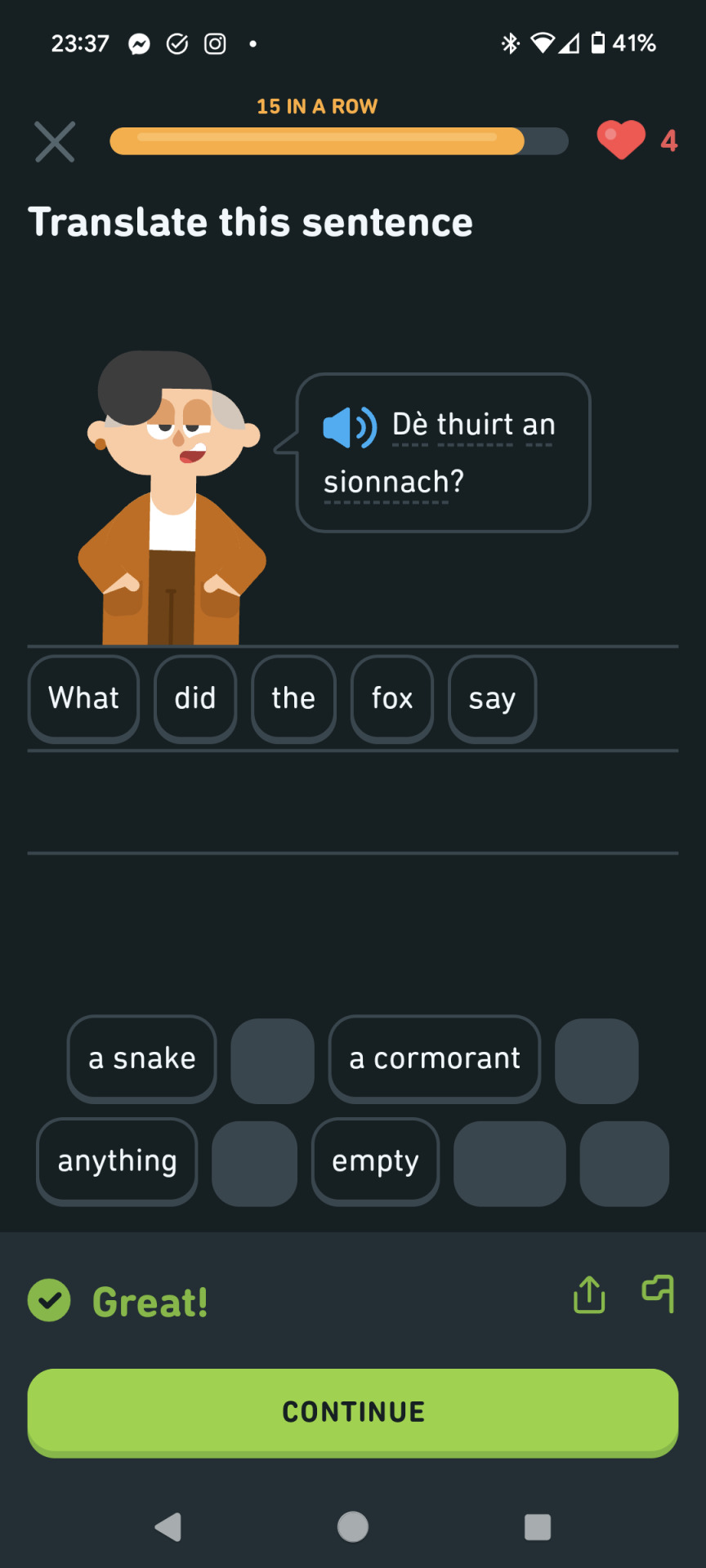
Not Duolingo earworming me with Ylvis 🙃
[Image transcription: Scottish Gaelic Duolingo sentence that translates to “What did the fox say?”]
124 notes
·
View notes
Text
i know people like clowning on ferrus manus for being mister iron hands of the iron hands legion but may i introduce Rogal Dorn


you have to butcher the gaelic but like...
122 notes
·
View notes
Text
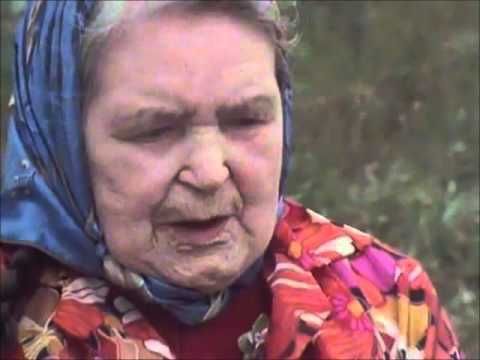

December 12th 1902 saw the birth of Nan Mackinnon or, to give her her Gaelic patronymic, Nan Eachainn Fhionnlaigh, at Kentangaval, Isle Of Barra.
Nan was a tradition-bearer, whose remarkable memory, enthusiasm, and love of the Gaelic oral tradition has ensured that her wealth of knowledge has been preserved and shared with future generations. She became known as Nan of Vatersay, or Nan of the songs.
Nan was the youngest of seven children. Her father, Hector (Eachann Fhionnlaigh), was also born and raised in Kentangaval, and was descended from the MacKinnons of Strath, Skye – the historic grazing constables to the MacNeils of Barra until the 19th century. Nan's mother Mary was from Mingulay, and had strong connections with the MacPhee family, who – according to local tradition – came to settle in Barra in the 14th century. Nan grew up in what was a politically tumultuous time in the Highlands, and this influenced her early life greatly. Despite having won security of tenure twenty years before Nan was born, there remained a strong sense of injustice at the uneven distribution of land in the Highlands. Having spent her early years in Barra, in 1907 Nan's father was part of the 'Vatersay Raiders' – landless cottars from Barra and Mingulay who carried out a land raid on Vatersay, establishing crofts on the neglected land. Despite the eventual failure of the Land Raid, Nan's family were eventually given a croft in Baile, Vatersay following the purchase of land on the island by the Congested Districts Board.
Nan's repertoire was among some of the most extensive and varied of her generation, and this is reflected in the recordings of her featured on the Tobar an Dualchais website. She came from a rich musical tradition, and was said to know around 400 songs by heart, most of which she learned from her mother. After receiving her schooling on the island, Nan left home when she was seventeen and – as was common for women of her age at the time – spent a number of years in service for a variety of people in Argyll. She also worked at the herring for a time, in both Shetland and Yarmouth before going to Glasgow. One of her sisters died suddenly in 1940, leaving four young children and a husband who was away at sea for long periods. Nan returned home to Vatersay to raise the children and remained there for the rest of her life.
Nan McKinnon had a great fondness for the stories and songs she knew, and she was convinced of the importance of the oral tradition to Gaelic communities. Growing up she would spend hours practising them until she knew them in their entirety. As Nan herself commented: "[Each story] tells the ways of the people that lived in those days. The waulking songs kept news alive from generation to generation. There were no newspapers, whereas today we read it in the papers and forget about it tomorrow. But the songs kept it alive. Those happenings that happened centuries ago are still to be told in song and story. It's wonderful." Over and above her repertoire of songs, Nan was also well known for her tales and legends – often of a supernatural nature – and her captivating story style. She also had a deep knowledge of the traditions of Uist and Barra, and was recording speaking about a variety of subjects from cures to feast days, to interpretations of omens and dreams. Her knowledge of the material culture of her native island was also extensive, and her recordings include discussions about traditional diet, including about what would be eaten when food was scarce.
There are almost 1,000 recordings of Nan on the Tobar an Dualchais website, the earliest dating back to 1953 when she was recorded by Donald MacPherson for the Canna Collection, several other visited her and recorded her over the years, she must have been quite the wee celebrity on Vatersay
James Ross summed up her significance as a tradition-bearer by saying: "Nan is the type of person that the folklore and folk-song collectors dream about. There is absolutely no trace of 'memory effect' as she responds to queries … Her answers are always a direct affirmative or negative, usually … the former. She never has to search her mind, and this, together with her unstinting co-operation, endless patience and subtle sense of humour, made the work of collecting a joy."
At the link below you can listen to Nan singing Griogal Cridhe, (literally "Gregor of the Heart", or "Beloved Gregor". It is a traditional Scottish lament and lullaby that was composed in Gaelic by Mór Chaimbeul ("Marion Campbell"), the widow of Griogair Ruadh Mac Griogair ("Gregor the Red MacGregor") (1541–1570), the chief of the Clan MacGregor of Glen Strae, who was executed at Taymouth Castle, Perthshire, on April 7th, 1570. There are many versions of the lyrics
Griogal Cridhe
Chorus;
Òbhan, òbhan, òbhan i ri
Òbhan i ri ò
Òbhan, òbhan, òbhan i ri
'S mòr, mo mhulad, 's mòr.
'S iomadh oidhche fhliuch is thioram,
Sìde nan seachd sian,
Gheibheadh Griogal dhomhsa creagan
Ris an gabhainn dìon.
Eudail mhòir, a shluagh an Domhain,
Dhòirt iad t'fhuil o'n dè,
'S chuir iad do cheann air stob daraich
Tacan beag bho d'chrè.
B' annsa bhi le Griogal cridhe
Teàrnadh chruidh le gleann,
Na le Baran mòr na Dalach,
Sìoda geal mu m' cheann.
Chan eil ùbhlan idir agam,
'S ùbhlan uil' aig càch,
'S ann tha m'ùbhlan-s' cùbhr' ri caineal
'S cùl a chinn ri làr.
'Nuair a bhios mnàthan òg a'bhaile,
'Nochd nan cadal sèimh,
'S ann bhios mis' air bruaich do lice,
'Bualadh mo dhà làimh.
Many a night, wet or dry
weather of the seven elements
Gregor would get me a rocky shelter
Against the storm
Greatest treasure in all the world
They spilt your blood yesterday
And they put your head on a post of oak
A little way from your body
Would that I were with beloved Gregor
Herding cattle in the glen
Than with the great Baron of the Dale
White silk around my head
I have no apples at all
Others have all the apples
My apple with the fragrance of cinnamon
The back of his head to the ground
When the young women of the village will be
Tonight sleeping soundly
I will be at your graveside
Beating my two hands
With the above being a lament I thought I would post another song from Nan, Haoi Ho Nach Dannsadh Sibh E is a much more upbeat song, according to the notes Nan’s mother heard this song from Lewis women at the fishing. Another source tells me that this is the only variant of that song, so without t the work of the likes of Donald MacPherson, and indeed Margaret Fay Shaw, some of these songs would have been lost to the world, they are an integral, very important part of our Gaelic roots. This song is a light vocal dance tune with a love theme. The song is of the type common among the women who worked as herring gutters.
https://www.tobarandualchais.co.uk/track/108438?l=en
77 notes
·
View notes
Text
I have enrolled on a one-year Gaelic course (Scots Gaelic, not Irish) and one of the many delightful things about the language I am discovering so far is that the dictionary form is in the imperative. which makes for some absolutely wonderful entries:

find Murdo without resource! be in deadly pursuit of Murdoch! okay!!!!! I will!!!!!!
#meichenxi manages#gaelic#learn gaelic#scottish gaelic#there's probably going to be quite a lot of gaelic content rather than chinese in the next year#I'm not abandoning chinese. I'm just not learning it as actively anymore#I'm still watching media and doing some reading but there are just only so many hours in the day
96 notes
·
View notes
Text
two is better than one anyways
wordcount: 1.9K
tags: double penetration, vaginal sex, kinktober, bottom Sakura, top Sasuke, top Naruto, background infidelity, canon relationship
synopsis: "I'm in." / "Sasuke!" / "What? She's my wife, if she wants to try take both of us at once I'm in. Are you?"
authors note: i love them so much, expect more of them this kinktober!
https://archiveofourown.org/works/59358802

"You really want to try it?" Naruto asked while the afterglow of sex settled in.
Sakura nodded, "I can take it."
"What if we break you?" Sasuke asked. In spirit he'd be smoking, but he's too busy trying not to focus on the ache in his pelvis to do so.
"There are medical ninjas who know better than to ask how I got my vagi-"
"If you use scientific terms I'm definitely gonna say no."
"Let me put it in a way a street rat will understand: the medical workers won't ask why you're carrying me in with blood pouring down my thighs in a worst case scenario. Is that easier for your ears?"
"Yeah."
"You really think we could fuck you up that badly?"
"The human body is fickle, some have bodies which could handle sex with a tailed beast, others can barely handle the workload of sex with another human."
"You know, you're not making it easier to believe that you taking the both of us at once won't hurt you."
"It will hurt, obviously. The angles you'd have to take would ensure some ache at first."
"I'm in."
"Sasuke!"
"What? She's my wife, if she wants to try take both of us at once I'm in. Are you?"
Naruto paused for a moment.
A chance to double team his earliest and longest standing crush with his second longest standing crush and best friend Sasuke?
That's a once in a lifetime sort of thing.
He sighed, "Yeah, I'll bite if Hinata says I can."
"Why don't you just invite her sometime," Sakura offered.
"Maybe in a couple more visits. She's very traditional, I'm shocked she even let's this happen."
"Makes sense considering her bloodline."
"Hey, that's my wife you're talking about.
-/-/-/-
She lays with just Sasuke in her for hours it feels. Naruto stays to the side, still as stone, hard as rock. He looks nervous.
"Are we gonna do this or not?" Sasuke asked as he looked over to Naruto.
"Yeah! Yeah, obviously," Naruto said far too fast to be truthful.
"If you don't want to we can do something else," Sakura offered, shifting just a bit from where she lay.
"I do! I just, I don't wanna hurt you." He takes tentative steps closer as he speaks. In a smooth motion he has his head between Sasuke's hip and Sakura's thigh, "I don't think it'll work."
Sasuke scoffed, "It'll work."
"From this angle?" As he speaks he gathers slick on two fingers and slides them across Sasuke's length.
It rouses a gasp out of Sasuke.
"You'll strain your hips if me and Sasuke are both between your thighs." He presses down with blunt nails and circles until he finds the sweet spot. With a muted grin he jams in two fingers under Sasuke's cock, making sure not to hurt either of them with his motion.
Sakura gasps with Sasuke this time.
As he fingers Sakura and rubs up on Sasuke with limited motions, he speaks aimlessly.
"Really, you'll have to be positioned awkward to even consider it."
He slides his palm down Sasuke's cock with a shallow thrust.
"Sasuke's a bit too wide in the hip for both of us to fit comfortably between your legs."
He leans a little further in, buried in the conjunction of his lovers. It's what heaven is like, he'd assume at least.
"And really, if Sasuke's cock and two of my fingers have you this twitchy I can't even imagine what adding me to the mix would do. Kind of an exciting thought if it doesn't injure you."
He sounds eager as he allows the notion to flourish in his head. He'd been dreading it in a way for the most part, excitement of fucking his friends, fear of hurting them. But, now that he's here, giving Sasuke a handjob and fingering Sakura simultaneously, he's starting to want too.
He steps back and away from them. They both whine as he retracts his hand.
"How much can you bend your leg?" Naruto asked before raising it from the ankle, "I think I have an idea."
"She can handle a mating press," Sasuke said coldly.
"As far as it needs to go," Sakura said.
"Nice." Naruto slung her ankle over his shoulder before slinging an arm around Sasuke's, "So, before I hop in-"
"Please never say that about me again," Sakura said desperately.
"Sorry- before I slide on in, how we gonna move?" Naruto asked.
"Move?" Came Sasuke's next question.
"We want to fuck her, right?" Naruto asked.
"I think that being full of both of you at the same time will be more than enough," Sakura answered with, "And we all know how much you two love frotting."
"We do not!"
Sakura rolled her eyes, "Sure you don't- just put it in already."
Naruto just grinned as he retracted his arm from Sasuke's shoulder, "Hold your horses, Sakura."
Truth be told, he doesn't know what he's doing at all. Still, he slides a hand down to Sasuke's hip to hold him still. Sasuke's hand comes to rest on top of his. They definitely could've set this up a lot better than they did what with the both of them standing and Sakura laid out on the bed.
Naruto falters before roughly lining up, shudders course through him at the touch of skin on skin. He leans in as he goes, his other hand sliding down Sakura's leg for support. Fuck, this harder than he thought it would be. He knew it'd be tricky at the minimum considering the angle working against the feat, but this is a struggle.
Sasuke's incessant whimpering as he grinds against him makes up for it. He still gently tugs Sasuke back a bit to catch the slick on his own cock before wedging himself in on the thrust back. It's barely any at all that got in, but its a start, and by god it's a start that makes Sakura react.
A long hiss of a cuss spills out of her lips as she tears into the sheets. She grits and teeth and lets the burn resolve as Naruto and Sasuke wait patiently, both reactive in their own right. Any motion from this point will push either of them to the brink with friction pressed so close together and Sakura knows this will throw her over the edge. Normally it'd take work to get her cumming, but tonight it'll be a different story.
"How are we-" He pauses with a caught breath.
Sasuke had moved.
"How are we holding up?" Naruto tried to ask.
"Good," Sasuke said promptly but breathlessly.
"I'm good," Sakura said, she was already starting to sound ruined.
Naruto nodded. His grip on both of them tightened, "Wanna keep going like this? Or do you wanna bust out the strap instead, Sakura?"
That gave Sakura a moment of pause before speaking, "Let's keep going."
"Okay!" His enthusiasm is breathless.
For a brief moment he falters, trying to further grasp this reality he's fallen into. It's wild. He doubts it'll ever read as reality looking back. It'll feel more like a wet dream than anything else he'd imagine.
He would try to make it last as long as he can, but his lovers are swift to impatience no matter the topic. He supposes that he is too. This awful tease of friction and pressure alike would drive him up the walls any other day.
All things considered it's easier than he thought it would be after that initial push. Everything about it leaves him winded and panting. Sasuke is whining, clawing into Naruto's hand as he tries to hold himself upright. Sakura seethes out a few curses amidst ragged moans and even more ragged breathing.
Wow.
Holy fuck.
For a moment they're completely still with disbelief. That actually fucking worked. A nagging thought kept all of them from believing it really could. Naruto thought Sakura would call it off, Sakura thought Sasuke, and Sasuke thought Naruto. It's hard to tell if it was worth it at this rate, can they even move enough to garner any pleasure?
It's Sasuke that tries to move first.
"Don't, holy shit." The words are hard to pick out from the vicious moan and heavy breathing.
"I'm with Naruto," Sakura chimed in with on an oddly high pitched tone.
"Pios naomh-"
"Sasuke, i love it when you speak foreign languages at me, but now is not the time," Naruto seethed.
Red rose to Sasuke's face, "Sorry."
They all hold still.
They don't want to move.
To break this oddly perfect moment.
"Ready to move?" Naruto asked.
"If you move I'll cum," Sasuke said.
"So yeah, we're ready to move then," Naruto said firmly, "At the same time, or something like that."
"I can do that."
Sakura stayed quiet.
"You okay with that?" Naruto asked.
She nodded.
"On three?"
"Just move you idiot-"
And Naruto moves without any warning, all three of them react. Sasuke moves next, inverting Naruto's motion. Too much stimulation. He's gonna drop to his knees and beg.
Sakura can't even think. Her throat is gonna sting tomorrow with how harshly she's abusing her vocal chords. It fucking burns, pleasures, and overwhelms her all at once to have both Naruto and Sasuke at once. This is nothing like being spit roasted or even taking one in the ass and the other up front.
She's just drowning in this sea of sensation, one central point bursting across the rest of her body. It's too much. She can't. Not for much longer at least. Her body will be fine but she can feel the pressure of a fast approaching orgasm even cloud her brain.
The hand on Sakura's leg is clawing into her now, he'll have to apologize later if he accidentally draws blood. He'd never do it on purpose. But right now he can't really focus on much aside from the fact he's fucking and frotting at the same time. And he's doing it to his best friends no less.
Oh yeah, this is what it's all about. He can't imagine this with anyone else. Can't really think up much of anything right now as orgasm fucking rocks him. The familiar keen of Sasuke rings true in his ears as Sakura yowls out.
That was fast.
He still doesn't move an inch until he stops shaking so much, knees pressed into the edge of the bed. His breathing is heavy and he can feel Sakura's leg twitch periodically as she whimpers and mumbles. Sasuke is leaned heavily on him, hand transferred to the bed for support.
Naruto tries to move Sakura's leg enough so he won't fuck it up as he collapses. He ends up with her leg resting across his back and an arm over the base of her ribs. Sasuke follows promptly thereafter, whole body heaving as he lays on his side next to Sakura.
"Holy fuck."
Sakura tries to sit up. Her entire body feels too weak to do so. She just drops back down again instead and Sasuke sweeps the hair out of her eyes.
"Thanks," She mumbled out in response.
"Guys," Naruto started with, "Holy fuck."
"We heard you the first time," Sasuke said as he flopped onto his back.
Naruto slowly dragged himself out of bed to hitch Sakura higher up the mattress.
"What are you doing?" Came her weary question.
"I gotta clean you up," Naruto said as he stared at the ruined state of her cunt. A twisted sense of accomplishment runs through him at the sight. He helped leave her gaping and oozing.
"Think we can both fit?" Sasuke asked as he sat up.
Naruto grinned, "Let's find out."
#kinktober 2024#naruto smut#sasunarusaku#sasusakunaru#narusasusaku#narusakusasu#they have so many ship tag variants holy fuck#writing#lemon#smut fanfiction#smutfic#the foreign language is scottish gaelic btw. roughly translates to holy fucking shit.#if some1 fluent in scottish gaelic can verify otherwise plesse let me know so i can make it accurate to holy fucking shit
54 notes
·
View notes